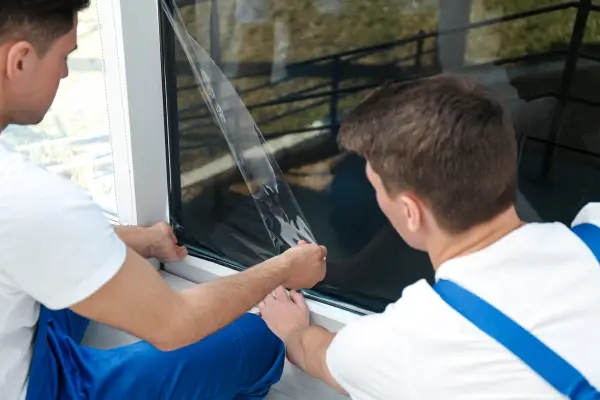
Depending on where you live, you may want to choose a window treatment that suits your specific climate and needs. Window treatments like, blinds, shutters, and window film can vary in effectiveness depending on your location and how they are used. Figuring out which window treatment is best for your home depends on factors like energy efficiency, insulation, glare control, sun exposure, average daytime temperatures and budget.
To help you determine which window treatment(s) might work best for you based on your region, we’ve put together a guide to help you sort it out. Remember, window treatments are not only helpful with blocking UV rays, they can also help maintain a more comfortable indoor environment when the temperatures outside fluctuate.
The geographic regions covered in this article are:
- New England
- Mid-Atlantic
- Southeast
- Midwest
- Southwest
- Mountain States
- West Coast
New England Window Treatments
New England experiences a humid continental climate that includes cold winters and heavy snowfall during the cold months of the year. Since natural light is diminished during winter months due to overcast skies, New Englanders generally want to avoid darkening their homes too much. Therefore, to keep your New England home at a comfortable temperature during the summer and winter months, we recommend the following window treatments:
Window treatments for controlling natural light and temperature:
- Roman shades: The thick material can help keep your home warm during extreme winters and cooler during the summer months. Yet these heavy shades still let ample natural light into your home.
- Wooden blinds: Provide a rustic, aesthetic look and feel. Can be fully opened to let light and warmth into your home or be closed to reduce sunlight and heat loss during the winter.
Mid-Atlantic Window Treatments
The Mid-Atlantic region experiences lots of extreme weather. Summers are very hot, while winter temperatures are often consistently below freezing. Your main priority in a window treatment should be temperature regulation. That is, you want your home to stay cool in the summer and warm in the winter without it costing you a fortune.
Window treatments to help regulate indoor temperature:
- Faux wood blinds: Will not warp in extreme temperatures like real wood blinds will and appear natural, giving your home a rustic feel. Hold up well in heavy winds.
- Polywood shutters: Guard against damage from moisture and extreme temperature shifts. Can provide up to 70% more temperature insulation than wood blinds, helping to keep your home cool in the summer and warm in the winter.
Southeast Window Treatments
Homeowners in the hot and humid Southeast, want to keep their homes cool even on the hottest, sunniest afternoons. The right window treatment can help keep your home comfortable throughout the year and help reduce your annual energy cost.
Window treatments for temperature control and aesthetics:
- Solar shades: Light solar shades are roller shades made using solar screen fabric with an open weave that provide better heat control than their dark counterparts.
- Faux wood blinds: Don’t warp in extreme temperatures like real wood blinds can. They also appear more natural, which can give your home a rustic feel.
Midwest Window Treatments
Keeping your home comfortable during the cold Midwest winters and muggy summer months can be a challenge. So, how do you choose the right window treatments for this climate? The answer lies in Polywood shutters and cellular shades:
Window treatments for damp, extreme temperatures:
- Polywood shutters: Guard against damage from moisture and extreme temperature shifts. Can provide up to 70% more temperature insulation than wood blinds.
- Cellular shades: Mimic drapery but are more functional than curtains. Improve energy efficiency by insulating against heat and cold better than other window shades. Are not damaged by summer humidity, either.
Southwest Window Treatments
As a Southwest resident, you’re used to the warm, dry daytime weather that everyone desires. However, true residents know that nights in the Southwest can get chilly. Any window treatment you choose will have to be able to effectively regulate the fluctuation in temperatures so your home stays comfortable during those warm days and cool nights.
Window treatments for dry, bright conditions:
- Plantation shutters: These shut tightly to help block out excessive light and can help reduce temperatures during the hottest part of the day. It’s best to keep your shutters closed when temperatures are high to save on cooling cost.
- Roller shades: Blackout roller shades allow you to control the amount of natural light in a room and can help block the heat transmitted through your windows. Roller shades have a basic look that works well with just about any decor.
Related Topic: Do I Need Security Window Film?
Mountain States Window Treatments
Depending on where you live in this area, the climate can range from semi-arid to an alpine. If you live in the semi-arid region, your window treatment requirements will be different than if you live in the higher elevations of the mountains (where temperatures and conditions can change rapidly).
Window treatments for extreme temperature changes:
- Cellular shades: Mimic drapery but are more functional than curtains. Improve energy efficiency by insulating against heat and cold better than window shades. Hold up better in damp, high humidity conditions.
- Wood blinds: Provides an extra layer of insulation against heat and cold. May also help reduce some outside noise, although not specifically designed for noise reduction. These blinds can be easily adjusted to help regulate the amount of natural light in a room.
West Coast Window Treatments
If you live in the West Coast region you are used to a relatively mild climate throughout most of the year with very few temperature extremes.
Window treatments for aesthetics and light control:
- Cellular shades: This window treatment is also referred to as honeycomb shades. They mimic drapery but are more functional than curtains. They hold up well to humidity and can be used to help defuse the amount of natural light in a room.
- Decorative window film: Composed of thin laminate film, cosmetic window films can help reduce our yearly energy cost by keeping the interior of your home cooler throughout the year. Window films can be applied to either the interior or exterior of your windows. Some of the more popular styles include, Sim Glas, rice paper, and frosted.
Professional Window Tinting for Any Climate
No matter what the climate is like where you live, your local Window Genie professional can help you choose the right window treatment for your home. If you need tinting or a film applied to your windows, we can help with that too! We offer a variety of decorative and security window films and professional installation. To learn more give us a call or request a quote online today. And to ensure your home stays comfortable, schedule an annual HVAC inspection and routine maintenance throughout the year.
